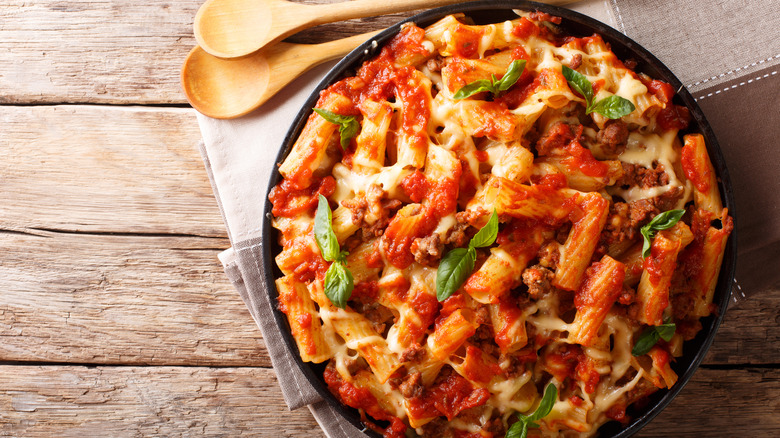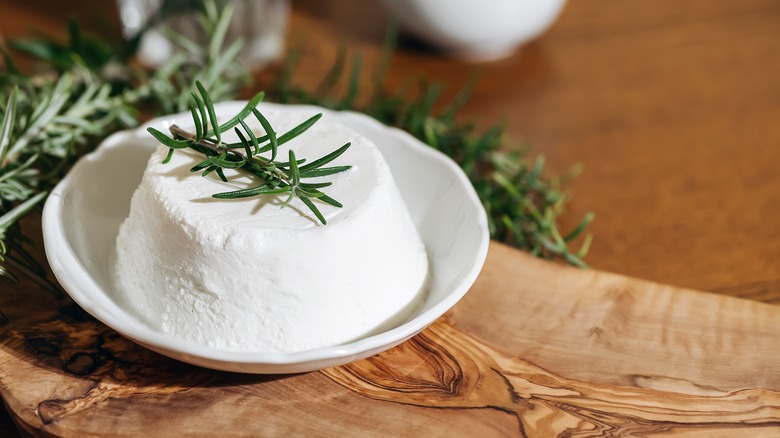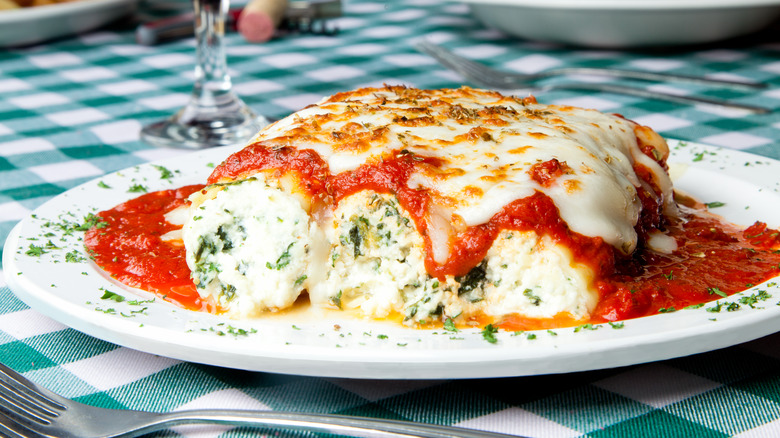The One Ingredient That Prevents Crumbly Ricotta In Baked Pasta
Ricotta has "cooked" right in the name – indeed, the word itself is Italian for "recooked." This seems appropriate, given that while this versatile cheese is delicious when fresh, it's frequently used in baked foods, such as classic Italian sweets like sfogliatella and Sicilian cannoli. And in savory baked pasta dishes, ricotta can really shine.
Still, despite being fundamental to many iconic baked pastas, from baked ziti to lasagna, manicotti to baked ravioli, there is one common gripe: After it's been sent through the oven, the once creamy and luscious ricotta often becomes dry and crumbly.
Fortunately, there's a very easy way to keep your ricotta creamy when baked by using an ingredient you may already have: heavy cream. Stir some heavy cream into your ricotta before you add it to your recipe and pop the dish into the oven. With this simple and quick step, you will fortify your ricotta with added moisture, so that even as some of the liquid vaporizes in the heat, there will still be enough to keep things silky and creamy. Add heavy cream to your ricotta, and you'll never again sit down to a crumbly baked pasta dinner.
Incorporating cream into your ricotta
The reason ricotta becomes grainy in baked pasta is that once some of its moisture evaporates during the baking process, what's left behind are concentrated bundles (or clumps) of proteins, which can come off as tasting crumbly.
There are many schools of thought on how to work around this issue, from mixing the ricotta with tomato sauce to folding it into a bechamel to swapping it entirely for cottage cheese, mascarpone, or cream cheese. But if you're a purist who loves the subtle taste of ricotta, heavy cream is the solution for you, as adding a little cream won't fundamentally change the ricotta's flavor profile. To put this tip into practice, you can use a ratio of about ½ cup of cream per pound of ricotta, and mix well with a rubber spatula or spoon to incorporate before adding to your pasta recipe.
Keep in mind that different creams also have varying fat contents, so by combining heavy cream with whole milk ricotta, you have higher butterfat to liquid ratio than, say, skim milk ricotta with light cream. This means your moisture will evaporate more quickly as there is less of it, but more fat means you'll find a creamier cheese left behind.
More tips for less crumbly baked pasta
Another way to avoid crumbly ricotta is to always start with a whole milk version, purchased from a trusted source like a local dairy. Well-made whole milk ricotta will be creamier to begin with thanks to its higher fat content, and so will be less likely to become dry and crumbly when baked.
It's also a good idea to scope out the ingredient list. Ricotta made for large-scale commercial sales may be subject to corner-cutting choices that are more about aesthetics than quality. Stabilizers such as gums or carrageenan are often added to prevent ricotta cheese from looking too liquid. These can be problematic in the oven, where the heat-induced deterioration of those stabilizers promotes graininess.
But once you're armed with high-quality ricotta and a little cream, you can feel confident making your cheese and spinach manicotti with meat sauce, baked ziti, and more. This single ingredient is even a key element in the best method for making silky smooth whipped ricotta, which is delicious dolloped on top of your pasta before serving. By incorporating this single common ingredient, you can rely on a creamy, un-crumbly filling for your next baked pasta.


